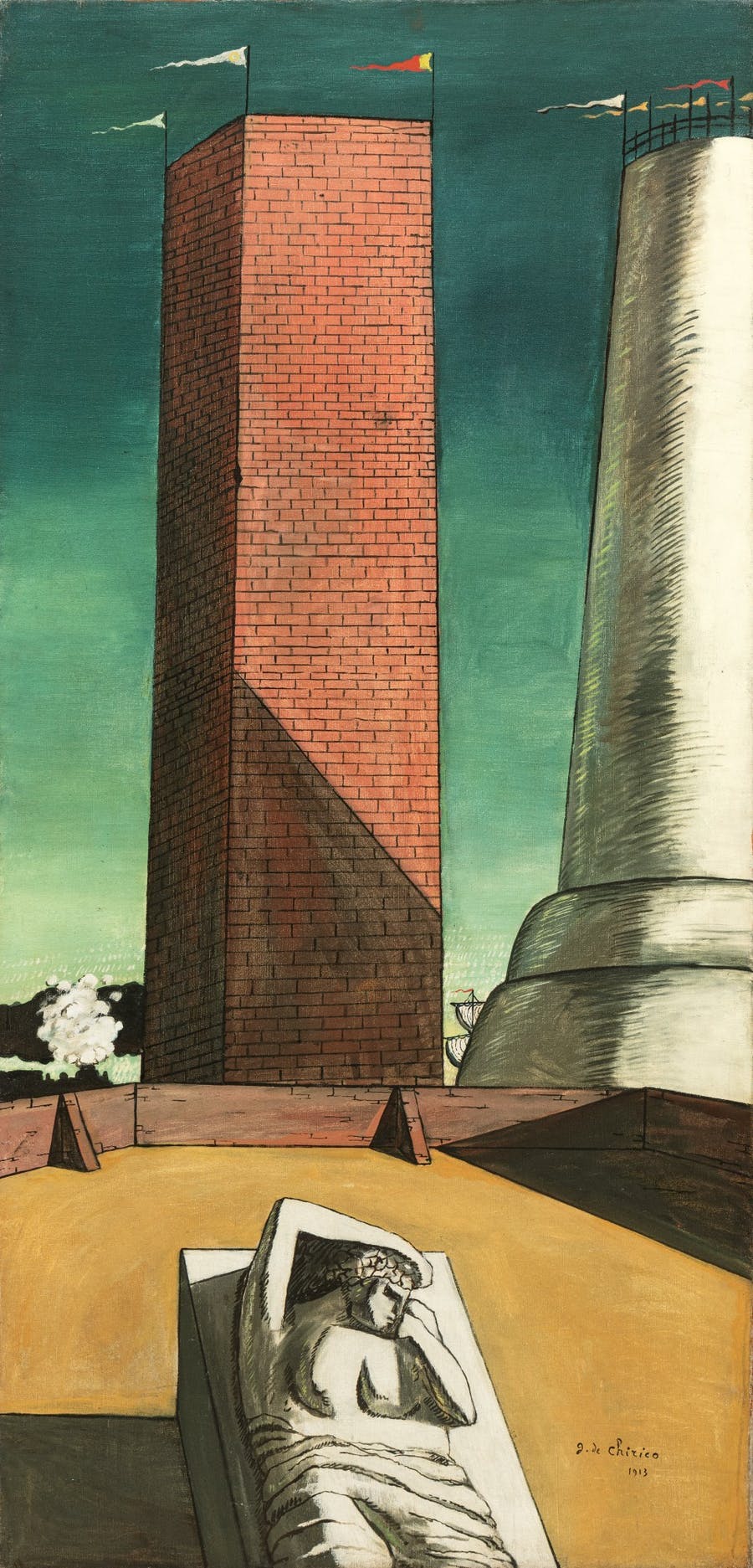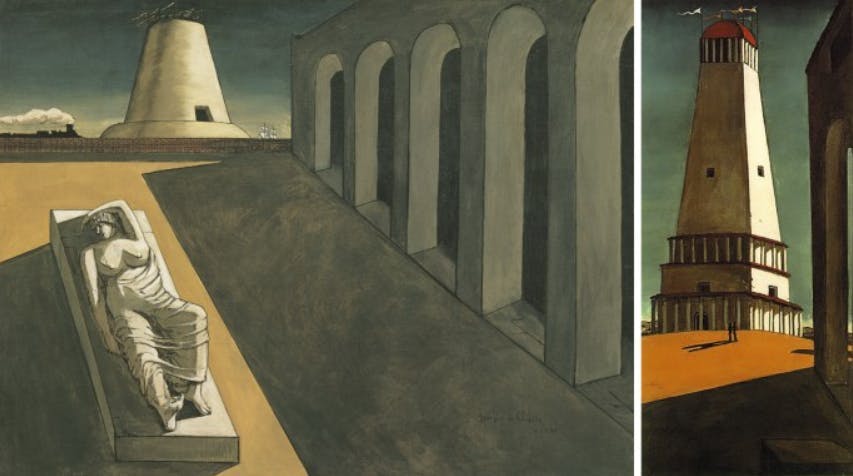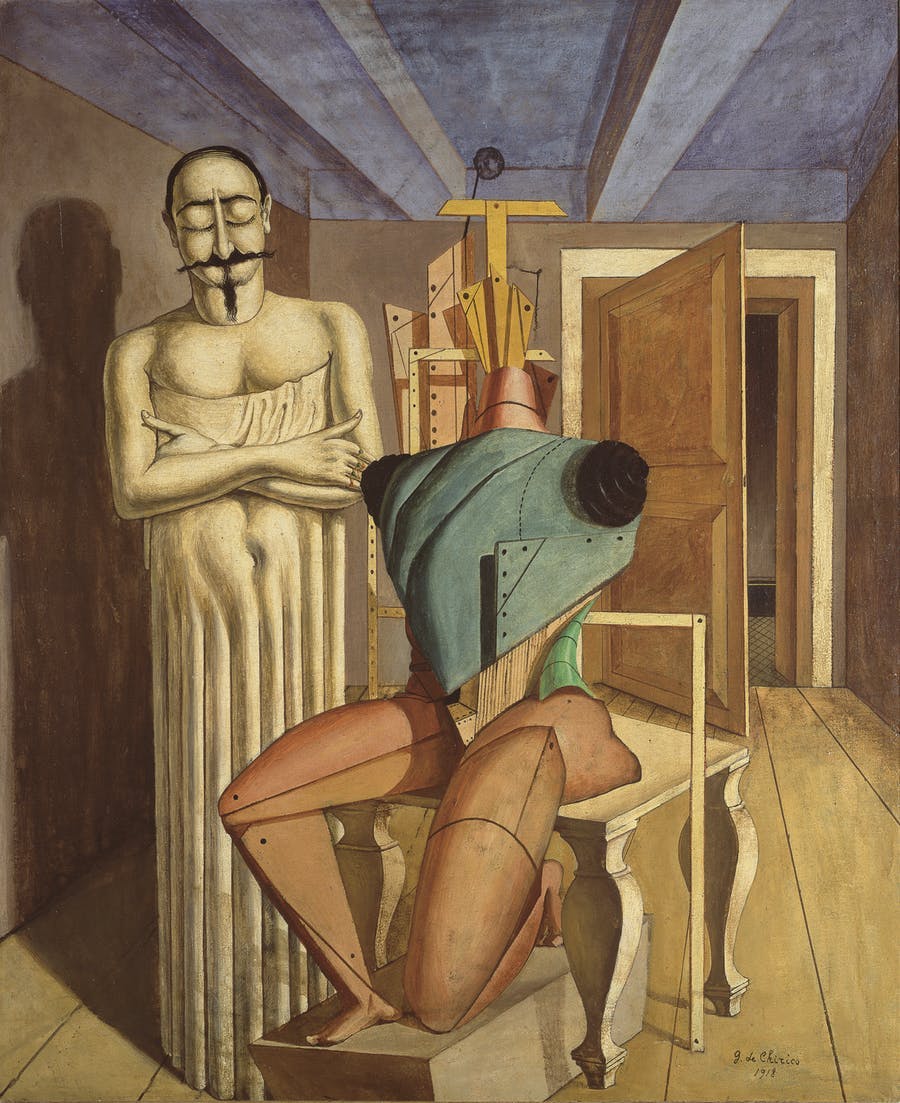A New Auction Record for Giorgio de Chirico
Presented as part of Sotheby's live-broadcast evening sales which totaled over $283 million, a painting by the founder of metaphysical painting set a new record.
Produced during the pivotal year of 1913, Il Pomeriggio di Arianna (Ariadne's Afternoon) is one of the eight canvases that constitute Giorgio De Chirico's first series, as well as the genesis of his metaphysical style, which would fundamentally change art history.
Of the eight canvases in the series, produced between 1912 and 1913, five are in museums such as the Met and the Philadelphia Museum of Art, and only three (including this work) are in private collections. Il Pomeriggio di Arianna (Ariadne's Afternoon) stands out from other paintings by its imposing size of 4 x 2 feet.
Related: Surrealism and the Subconscious

The canvas, which is one of the most beautiful metaphysical works of the artist's early days still in private hands, was the subject of a nine-minute auction battle between two collectors, the auction house said in a press release, before selling for $15.8 million. This amount set a new record for the Italian artist, which had been unchanged since 2009. The previous record was held by Il Ritornante, a work of 1918 from the collection of Yves Saint Laurent and Pierre Bergé, auctioned for $14.1 million at Christie's.
The central figure of Il Pomeriggio di Arianna (Ariadne's Afternoon) is a reclining and draped statue, inspired by an ancient sculpture of the goddess Ariadne. Ariadne is asleep on the island of Naxos, where she had been abandoned by her love, and future king of Athens, Theseus. In each of the eight canvases that make up the series, the sculpted sleeping figure is placed in different versions of a piazza: viewed from the side, from above, or diagonally.

Towers, trains and arches, elements found in his various works, complete the composition. Only two of his canvases, including this painting, also depict a ship. The other painting shows Theseus sailing away from the island while Dionysus arrives on a steam train.
This series was first identified by the famous curator and art historian James Thrall Soby, whose personal collection, which included several De Chirico works, was incorporated into the Museum of Modern Art (MoMA) after his death at the end of the 1970s.
Related: Leonor Fini: 6 Little Known Facts

Born in Greece to Italian parents in 1888, De Chirico was surrounded by images of the ancient world from an early age. Classical mythology, history, art and architecture were an inexhaustible source of inspiration for the painter, just like the myth of Ariadne, which can be found repeatedly in his work.
The notion of “metaphysical painting” only appeared in 1914 with Guillaume Apollinaire, who referred to the enigmatic quality of Giorgio de Chirico's cityscapes. The artist's imagery, interspersed with architectural and sculptural motifs, squares and ancient figures, was not only a turning point in his career, but also laid the foundations for Surrealist iconography, which flourished in the next decade.
Related: René Magritte: Bowler Hats with Belgitude
His works, unanimously admired by the surrealists, were later rejected just as completely. The final break with the movement created by André Breton took place in 1928. Surrealist painters even went so far as to organize a counter-exhibition entitled Ci-gît Giorgio De Chirico to express their opposition to his painting. This did not prevent De Chirico from pursuing his work in a more academic way and investing in the European and American markets.
The two sales of contemporary art and Impressionist and modern art organized by Sotheby's totaled $283.9 million with 97.4% of lots sold. A major work by Giacometti, Femme Leoni, soared for $25.9 million, two works by Basquiat totaled $15.1 million and the second highest price for a work by Man Ray was reached at $5.8 million with Black Widow (Nativity).


